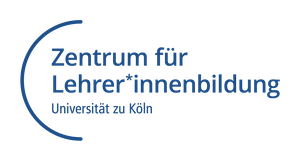Was ist Unterstützte Kommunikation?
Menschen, die sich nicht oder unzureichend mittels Sprache ausdrücken können, haben die Möglichkeit durch den Einsatz alternativer Sprachsysteme und Hilfsmittel an Kommunikation teilzuhaben. Der Begriff der Unterstützten Kommunikation (UK) leitet sich von der internationalen Bezeichnung „Augmentative and Alternative Communication“ (ACC) ab und beschäftigt sich mit dem Gebrauch alternativer Formen und Zeichen, die ersetzend oder ergänzend zur Sprache und zum Sprechen eingesetzt werden (von Tetzchner & Martinsen, 2000, S. 17).
 Literatur
Literatur
- Lage, Dorothea (2006): Unterstützte Kommunikation und Lebenswelt. Bad Heilbrunn: Klinkhardt.
- Leber, Irene (2001): Nikki ist nicht sprachlos! Kommunikation eines nichtsprechenden, körperbehinderten Kindes. Karlsruhe: Von Loeper Verlag.
- Von Tetzchner, Stephen; Martinen, Harald (2000): Einführung in die unterstützte Kommunikation. Heidelberg: Winter.
-
Einführung 2
-
Herzlich willkommenLecture1.1
-
SelbstreflexionLecture1.2
-
-
Personenkreis Menschen mit Autismus-Spektrum-Störung 6
-
Personenkreis Menschen mit Autismus-Spektrum-StörungLecture2.1
-
Diagnostische Merkmale einer Autismus-Spektrum-StörungLecture2.2
-
Besonderheiten im VerhaltenLecture2.3
-
Besonderheiten in der Kommunikation – AllgemeinesLecture2.4
-
Besonderheiten in der Kommunikation – Joint AttentionLecture2.5
-
Besonderheiten in der Kommunikation – Zentrale KohärenzLecture2.6
-
-
Kommunikation 8
-
KommunikationLecture3.1
-
Was ist Kommunikation?Lecture3.2
-
Begriffsbestimmung “Kommunikation”Lecture3.3
-
Menschliches Grundbedürfnis nach KommunikationLecture3.4
-
Kommunikationstheorien und -modelleLecture3.5
-
Zugrundeliegendes Verständnis von KommunikationLecture3.6
-
Funktionen von KommunikationLecture3.7
-
Bedeutung von KommunikationLecture3.8
-
-
Unterstützte Kommunikation 6
-
Kommunikative Erfahrungen von Menschen mit kommunikativen Auffälligkeiten und eingeschränkter LautspracheLecture4.1
-
Anknüpfungspunkt der Unterstützten KommunikationLecture4.2
-
Was ist Unterstützte Kommunikation?Lecture4.3
-
Förderung der Kommunikativen KompetenzLecture4.4
-
Welche Kommunikationsformen gibt es?Lecture4.5
-
Zugang zu Unterstützter KommunikationLecture4.6
-
-
Unterstützte Kommunikation und Diagnostik 5
-
Herausforderungen bei der DiagnostikLecture5.1
-
Vorgehen bei der DiagnostikLecture5.2
-
Das Gespräch/Die BefragungLecture5.3
-
Die BeobachtungLecture5.4
-
Diagnostische TestverfahrenLecture5.5
-
-
Kommunikationsförderung 8
-
KommunikationsförderungLecture6.1
-
Kommunikationsförderung bei Menschen mit ASSLecture6.2
-
IntentionalitätLecture6.3
-
Intentionalität in der UKLecture6.4
-
Bedeutung der Intentionalität für UKLecture6.5
-
Intentionalität herstellenLecture6.6
-
Etablierung eines ZeichensLecture6.7
-
Intentionalität bei Menschen mit ASSLecture6.8
-
-
Modelling als Ansatz der Kommunikationsförderung 12
-
Modelling als Ansatz der KommunikationsförderungLecture7.1
-
Modelling in der Unterstützen Kommunikation – EinführungLecture7.2
-
Lernen am Modell bei regulärer SprachentwicklungLecture7.3
-
Spracherwerb bei (noch) fehlender LautspracheLecture7.4
-
Modelling als Umdenken in der KommunikationsförderungLecture7.5
-
Prinzipien des ModellingLecture7.6
-
Die Umsetzung des Modelling im AlltagLecture7.7
-
Modelling, Vokabular & ThemenfelderLecture7.8
-
Auswahl der einzuführenden WörterLecture7.9
-
Modelling in der Umsetzung als FachkraftLecture7.10
-
Modelling Schritt für SchrittLecture7.11
-
Was Sie als Fachkraft mitbringen solltenLecture7.12
-
-
Beispielvideos Modelling 9
-
Modelling Beispielvideos EinführungLecture8.1
-
Modelling Video 1Lecture8.2
-
Modelling Video 2Lecture8.3
-
Modelling Video 3Lecture8.4
-
Modelling Video 4Lecture8.5
-
Modelling Video 5Lecture8.6
-
Modelling Video 6Lecture8.7
-
Gedankensammlung zu den VideosLecture8.8
-
Modelling bei Menschen mit Autismus-Spektrum-StörungenLecture8.9
-
-
Abschluss 3
-
Überprüfung der LernzieleLecture9.1
-
SchlusswortLecture9.2
-
RückmeldungLecture9.3
-




